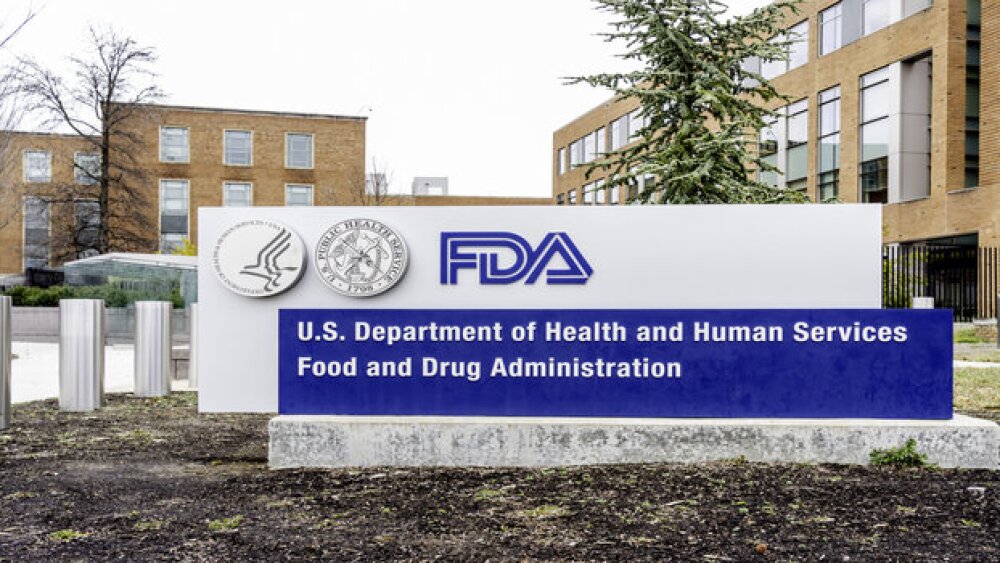Indivior PLC (LON: INDV) today announced the publication of data from a clinical pharmacology study designed to assess the ability of buprenorphine to reduce respiratory depression and apnea associated with escalating doses of fentanyl administered in a clinical setting.
|
RICHMOND, Va., Jan. 27, 2022 /PRNewswire/ -- Indivior PLC (LON: INDV) today announced the publication of data from a clinical pharmacology study designed to assess the ability of buprenorphine to reduce respiratory depression and apnea associated with escalating doses of fentanyl administered in a clinical setting. The manuscript entitled "Effect of sustained high buprenorphine plasma concentrations on fentanyl-induced respiratory depression: a placebo-controlled crossover study in healthy volunteers and opioid-tolerant patients," was published online on January 27, 2022, and will appear in an upcoming print issue of PLOS ONE.1 Indivior Announces Publication of Results from Buprenorphine-Fentanyl Interaction Study
in PLOS ONE Provisional data from the Centers for Disease Control and Prevention (CDC) estimate there were 101,263 predicted drug overdose deaths in the U.S. during the 12-month period ending June 2021, with approximately 76,002 and 64,977 of these deaths attributable to opioids and synthetic opioids (excluding methadone), respectively.2 The majority of opioid-related overdose deaths in the US are the result of synthetic opioids (mainly fentanyl and illicit fentanyl analogs) that are more potent than heroin and that can unexpectedly cause respiratory depression by being ingested as a substitute for heroin or with drugs such as prescription opioids, cocaine, methamphetamine or nonopioids with sedative or hypnotic properties (e.g., benzodiazepines, gabapentin, and xylazine)3,4,5 6 "The nation's drug overdose epidemic is now largely driven by illicit fentanyl and fentanyl analogs, often in combination or in adulterated forms, posing an even greater risk of overdose to people struggling with addiction,7" said Mark Crossley, Chief Executive Officer, Indivior. "In the 12-month period ending in June 2021, 75 percent of the estimated 101,000 drug overdose deaths were driven by opioids2 – an average of more than 200 deaths per day, double the number of fatalities resulting from motor vehicle traffic crashes.8" This clinical pharmacology study, which was conducted in a medical center anesthesiology department, was designed to assess the competitive interaction of fentanyl and buprenorphine on respiratory depression. It evaluated the ability of treatment-relevant plasma concentrations of buprenorphine to prevent respiratory depression and resultant apnea (cessation of breathing) induced by escalating doses of fentanyl. The primary endpoint of the study was to measure the effects of escalating fentanyl dosing on respiratory depression as measured by minute ventilation (VE) under elevated carbon dioxide (CO2) conditions. VE is the volume of gas inhaled or exhaled from a person's lungs per minute. VE is an important parameter in respiratory medicine due to its relationship with blood carbon dioxide (CO2) levels. The maximum decrease in VE, induced by the highest dose of fentanyl, was nearly 60 percent less with a steady-state plasma buprenorphine concentration of 2.0 ng/mL compared with placebo (33.7 percent vs 82.3 percent decrease in VE, respectively). The risk of experiencing apnea requiring verbal stimulation after fentanyl dosing was significantly lower with buprenorphine than with placebo (p=0.001).1 "The results of this proof-of-principle study increase our understanding of the role high sustained buprenorphine plasma concentrations may have in reducing fentanyl-induced respiratory depression," said Christian Heidbreder, PhD, Chief Scientific Officer, Indivior. "Future research is warranted to assess the competitive interaction of buprenorphine and fentanyl (as well as other illicitly manufactured fentanyl analogs) as we continue to deepen our understanding of buprenorphine as an evidence-based treatment for patients struggling with opioid use disorder." In June of 2021, the US Food and Drug Administration (FDA) approved a label update for SUBLOCADE® (buprenorphine extended release) injection, for subcutaneous use (CIII)9, to include data from this clinical pharmacology study in Section 12.2 Pharmacodynamics; Pharmacodynamic Interaction with Fentanyl.1 About SUBLOCADE®9 SUBLOCADE (buprenorphine extended release) injection, for subcutaneous use (CIII) INDICATION SUBLOCADE should be used as part of a complete treatment plan that includes counseling and psychosocial support.
Prescription use of this product is limited under the Drug Addiction Treatment Act. CONTRAINDICATIONS WARNINGS AND PRECAUTIONS Respiratory Depression: Life threatening respiratory depression and death have occurred in association with buprenorphine. Warn patients of the potential danger of self-administration of benzodiazepines or other CNS depressants while under treatment with SUBLOCADE. Opioids can cause sleep-related breathing disorders e.g., central sleep apnea (CSA), sleep-related hypoxemia. Opioid use increases the risk of CSA in a dose-dependent fashion. Consider decreasing the opioid using best practices for opioid taper if CSA occurs. Strongly consider prescribing naloxone at SUBLOCADE initiation or renewal because patients being treated for opioid use disorder have the potential for relapse, putting them at risk for opioid overdose. Educate patients and caregivers on how to recognize respiratory depression and how to treat with naloxone if prescribed. Risk of Serious Injection Site Reactions: The most common injection site reactions are pain, erythema and pruritis with some involving abscess, ulceration, and necrosis. The likelihood of serious injection site reactions may increase with inadvertent intramuscular or intradermal administration. Neonatal Opioid Withdrawal Syndrome: Neonatal opioid withdrawal syndrome is an expected and treatable outcome of prolonged use of opioids during pregnancy. Adrenal Insufficiency: If diagnosed, treat with physiologic replacement of corticosteroids, and wean patient off the opioid. Risk of Opioid Withdrawal With Abrupt Discontinuation: If treatment with SUBLOCADE is discontinued, monitor patients for several months for withdrawal and treat appropriately. Risk of Hepatitis, Hepatic Events: Monitor liver function tests prior to and during treatment. Risk of Withdrawal in Patients Dependent on Full Agonist Opioids: Verify that patient is clinically stable on transmucosal buprenorphine before injecting SUBLOCADE. Treatment of Emergent Acute Pain: Treat pain with a non-opioid analgesic whenever possible. If opioid therapy is required, monitor patients closely because higher doses may be required for analgesic effect. ADVERSE REACTIONS For more information about SUBLOCADE, the full Prescribing Information including BOXED WARNING, and Medication Guide, visit www.sublocade.com. About Opioid Use Disorder (OUD) About Indivior Forward-Looking Statements Various factors may cause differences between Indivior's expectations and actual results, including, among others (including those described in the risk factors described in the most recent Indivior PLC Annual Report and in subsequent releases): factors affecting sales of Indivior Group's products and financial position; the outcome of research and development activities; decisions by regulatory authorities regarding the Indivior Group's drug applications or authorizations; the speed with which regulatory authorizations, pricing approvals and product launches may be achieved, if at all; the outcome of post-approval clinical trials; competitive developments; difficulties or delays in manufacturing and in the supply chain; disruptions in or failure of information technology systems; the impact of existing and future legislation and regulatory provisions on product exclusivity; trends toward managed care and healthcare cost containment; legislation or regulatory action affecting pharmaceutical product pricing, reimbursement or access; challenges in the commercial execution; claims and concerns that may arise regarding the safety or efficacy of the Indivior Group's products and product candidates; risks related to legal proceedings, including compliance with the U.S. Department of Justice Resolution and Settlement Agreements, noncompliance with which could result in potential exclusion from participating in U.S. Federal health care programs; the ongoing investigative and antitrust litigation matters; the opioid national multi-district litigation and securities class action litigation; the Indivior Group's ability to protect its patents and other intellectual property; the outcome of patent infringement litigation relating to Indivior Group's products, including the ongoing ANDA lawsuits; changes in governmental laws and regulations; issues related to the outsourcing of certain operational and staff functions to third parties; risks related to the evolving COVID-19 pandemic and the potential impact of COVID-19 on the Indivior Group's operations and financial condition, which cannot be predicted with confidence; uncertainties related to general economic, political, business, industry, regulatory and market conditions; and the impact of acquisitions, divestitures, restructurings, internal reorganizations, product recalls and withdrawals and other unusual items. Consequently, forward-looking statements speak only as of the date that they are made and should be regarded solely as our current plans, estimates and beliefs. You should not place undue reliance on forward-looking statements. We cannot guarantee future results, events, levels of activity, performance or achievements. Except as required by law, we do not undertake and specifically decline any obligation to update, republish or revise forward-looking statements to reflect future events or circumstances or to reflect the occurrences of unanticipated events. References:
SOURCE Indivior |
||||||||||||||||||
Company Codes: LSE:INDV, OTC-PINK:INVVY |





